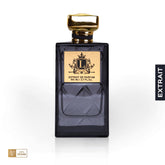Indispensable for Perfumes: Cinnamon
Information about the aromatic, fragrant cinnamon bark is often found in ancient Mesopotamian, ancient Roman, old Indian, ancient Chinese, ancient Greek, and Latin inscriptions. It is believed that the type of cinnamon found in these documents is Chinese cinnamon (Cortex Cinnamomi cassia) and is a species with a thicker shell, less aromatic. These shells were probably found in China, where Chinese cinnamon has been known since 2700 BC. No evidence of cinnamon growing in Ceylon was found until the 13th century. Cinnamon culture in Ceylon began when the Dutch invaded Ceylon in 1770.
What Is Cinnamon?
Cinnamon is a spice derived from the inner shells of several different tree species belonging to the genus Cinnamomum. This spice, derived from cinnamon trees’ bark, is mainly used in kitchens, sweet and salty dishes, breakfast cereals, snacks, tea, and traditional foods as an aromatic condiment and flavoring. Usually, its form that we use in this product sticks cinnamon powder/cinnamon bark. There are options. The use of cinnamon sticks is a practical option for the making of herbal teas and sweet syrups. The aroma of cinnamon comes from the main ingredient, cinnamaldehyde, known as cinnamon oil.
Bar cinnamon is the generic name for spice products produced by some species of trees. These trees are all members of the genus Cinnamomum in the family Lauraceae. Because it is a valuable plant, there are different varieties of cinnamon prepared by various methods. But China and Ceylon are the two most commonly used types of cinnamon. The woody makes Chinese cinnamon of the cinnamon plant. In Ceylon cinnamon, this woody part is removed. Cinnamomum Verum is sometimes considered” true cinnamon,” but in international trade, most cinnamon uses a different cinnamon type, Cassia.
What Are the Benefits Of Cinnamon?
- It has been shown by various studies that this spice, which has added taste to our kitchens for centuries with its unique taste and smell, also has many health benefits:
- Has rich antioxidant content. Cinnamon can protect your body from oxidative damage caused by free radicals with this feature.
- Cinnamon’s anti-inflammatory property helps your body fight infections and repair tissue damage.
- Cinnamon has also been observed to increase” acceptable” HDL cholesterol levels and lower blood pressure.
- Insulin is one of the essential hormones that regulate metabolism and energy use. Cinnamon can significantly reduce insulin resistance and help this hormone function properly.
- Cinnamon has been observed to reduce the amount of glucose entering the bloodstream after meals. Cinnamon, with this feature, lowers blood sugar levels.
- Cinnamon fights bacterial and fungal infections. Cinnamaldehyde, one of the main active ingredients of cinnamon, helps to fight various diseases. Cinnamon oil has been observed to affect respiratory infections caused by fungi.
Use of Cinnamon
Cinnamon bark oil is one of the most valuable flavorings. It is widely used in sweets, confectionery, cakes, sauces, and various beverages. Cinnamon in the form of oil is preferred in producing such foods, in terms of being homogeneous and more comfortable to adjust the amount. Cinnamon bark oil is also used in the production of Oriental type perfumes in small quantities.
Cinnamon oil is an essential oil obtained by steam distillation from the leaves and thin Cinnamomum cassia branches. It is also known by the name Cassia oil. Cinnamon oil is a yellowish-brownish liquid; its color darkens when leftover or in contact with air. It has the characteristic smell and flavor of Chinese cinnamon.
Currently, cinnamon is produced in Sri Lanka, China, Vietnam, Laos, Indonesia, the Seychelles Islands, and Madagascar. However, cinnamon produced in Southeast Asia is of the highest quality.

